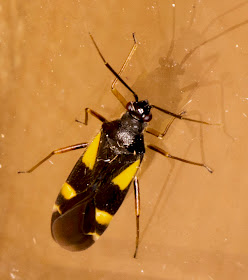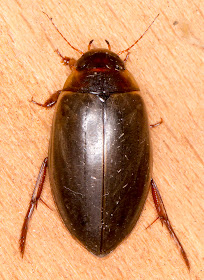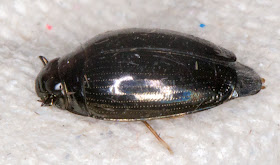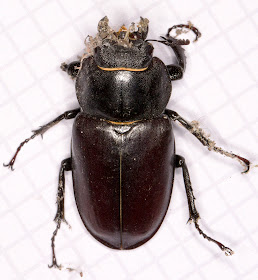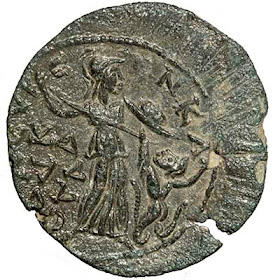 |
| Fly, Phaonia species. In my garden light trap in Hayes on 14 June 2014. |
There's not much happening outside at the moment, unless you are keen on lichens, and I know very little about them. So here are some of the creatures that came to my garden moth trap last summer.
Starting with a few flies. Flies are quite a varied group, and I only photograph a few of them. I usually ignore bluebottles, greenbottles and house flies. Also, I don't seem to have any dung-flies from last year, and they are quite common and rather pretty. But this one, a Phaonia, caught my eye.
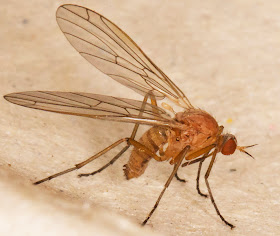 |
| Fly, Xanthempis concolor. In my garden light trap in Hayes on 18 May 2014. |
As did this small-headed creature, Xanthempis concolor. I can't always get good photos of these small insects. They are a lot more mobile than moths when disturbed so I have to take them where they stand, often oddly positioned or (like this one) partly hidden from an otherwise good viewpoint. Wing shape and veins, antennae, body shape and markings can all be important.
I usually have to rely on others to identify them, so I try to get as much visual information as possible.
 |
| Fly, Dilophus species. Fever Fly. In my garden light trap in Hayes on 25 October 2014. |
I can recognise a few specific types. That shiny black appearance and triangular, ridged body shape on this one made me think this was a Bibio, or close relation, and it turned out that it was. Dilophus are in the family Bibionidae.
 |
| Picture-winged Fly, Anomoia purmunda. In my garden light trap in Hayes on 30 July 2014. |
And this I can place in a large group called Picture-winged Flies, belonging to the superfamily Tephritoidea. I always try to photograph these because, obviously, they have pretty wings! And can usually be identified by them. This one is Anomoia purmunda.
I can place a lot of the hoverflies, too, but they don't tend to come to the trap and I have lots of photos of them elsewhere in my blog.

